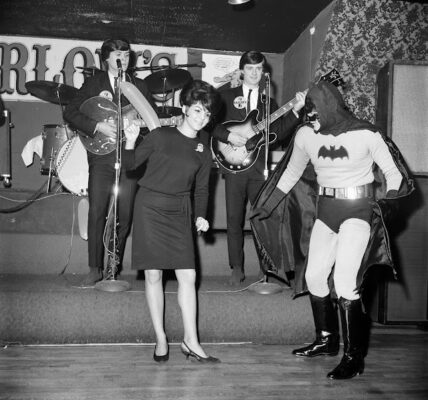Electric room heaters have transformed dramatically since they first emerged in the 19th century. What began as a revolutionary method of heating has now evolved into advanced, efficient, and smart technology that integrates seamlessly into our modern lives. Electric heaters are no longer just about warmth—they’re intelligent devices that can learn and adapt to our preferences. In this article, we’ll explore the journey of electric heaters, from their early beginnings to the sophisticated smart heaters shaping our future.
The Birth of Electric Heating

Electric heating traces back to the invention of the light bulb by Thomas Edison in 1880. This groundbreaking invention opened the door for heating technology, as early electric heaters relied on light bulbs to produce warmth. However, to function efficiently, these heaters needed a durable, high-resistance material. In 1905, Albert Leroy Marsh created nichrome, an alloy that could endure high temperatures without corroding, marking a significant milestone in electric heating. This material is still used in modern electric heating elements due to its durability and efficiency.
Early Electric Heaters and the Role of General Electric
One of the earliest companies to experiment with electric heating was General Electric, co-founded by Edison. In the 1890s, General Electric introduced some of the first electric heaters, utilizing elongated glass bulbs to generate heat—a design strongly influenced by Edison’s work. Meanwhile, British engineer Herbert John Dowsing was developing electric heating technology across the Atlantic. His company, Dowsing Radiant Heat, became one of the first to introduce electric heaters into British homes, using copper backing to effectively radiate warmth into rooms.
The Rise of Portable Heaters and the Need for Safety
By the early 1900s, companies like Belling & Co in the UK were producing heaters that resembled table lamps, with reflective dishes to help project heat. The popularity of portable electric heaters grew quickly, making them household essentials. After World War II, “bar heaters” with distinctive coiled wire elements emerged, creating a comforting orange glow when in use. However, these early models lacked safety features, which led to accidents and even fires. This prompted manufacturers to introduce safety guards and educate consumers on proper use, marking the beginning of safety-focused design.
Storage Heaters: A Solution for Energy Demand in the 1960s
With electric heating’s growing popularity, energy demand surged during daytime hours. To manage this, the UK developed storage heaters in the 1960s, designed to be charged with electricity at night when demand was lower. These heaters stored energy in thermal bricks, releasing warmth gradually throughout the day. Though innovative, storage heaters had limitations, such as their inability to respond to sudden temperature drops. The 1970s oil crisis and evolving energy policies eventually led to a decline in their use, but storage heaters paved the way for more efficient heating solutions.
The Digital Era: Precision Control and Enhanced Efficiency
By the late 20th century, digital technology was transforming home appliances, including electric heaters. Digital control panels made it possible for users to set heating schedules and manage temperature with precision. The Haverland RC Wave was one of the first heaters to feature programmable controls and memory storage for user settings, making electric heating more adaptable and efficient. This new level of control allowed people to customize their heating experience to fit their daily routines, reducing energy waste and enhancing convenience.
Smart Technology Revolutionizes Electric Heating
Electric heating entered the smart technology era in recent years with the integration of Wi-Fi and smart home devices. Modern heaters, such as the Haverland SmartWave, feature occupancy sensors and self-learning algorithms that adapt to users’ daily schedules. These heaters “learn” when the home is occupied and adjust output accordingly, conserving energy by heating only when necessary. Wi-Fi-enabled heaters also allow users to control their heating from anywhere using smartphone apps, providing unmatched convenience and energy efficiency.
Key Benefits of Smart Heaters in Today’s Homes
Smart heaters offer multiple advantages over traditional models, making them an attractive choice for homeowners:
- Energy Efficiency: Smart heaters adjust based on occupancy and temperature changes, using sensors and algorithms to avoid wasting energy.
- Convenience: With app-based controls, users can warm their home remotely, ensuring a cozy environment upon arrival and saving energy when away.
- Personalization: Smart heaters allow users to set schedules, customize heating levels, and create personalized comfort in different rooms.
- Adaptability: Modern heaters can detect changes in temperature and respond accordingly, maintaining consistent warmth without constant manual adjustments.
Looking Ahead: The Future of Electric Heating

Electric heating continues to advance, with voice control through devices like Amazon Alexa and Google Assistant already compatible with some heaters. In the near future, we might see electric heaters equipped to monitor air quality, detect weather changes, and automatically adjust their output to maintain optimal comfort. These innovations aim to enhance convenience while promoting a sustainable, eco-friendly approach to home heating.
Conclusion: The Remarkable Evolution of Electric Heating
Electric room heaters have come a long way from their simple beginnings in the late 19th century. What started as a novel heating method powered by light bulbs and nichrome wires has evolved into a vital part of modern comfort. With ongoing advancements in digital and smart technology, electric heating will continue to become even more efficient, customizable, and user-friendly.
As we enjoy the warmth and convenience of our heaters today, we can appreciate the rich history and innovation that has brought us here. And as technology progresses, we can look forward to even greater advancements in electric heating that prioritize comfort, efficiency, and sustainability




